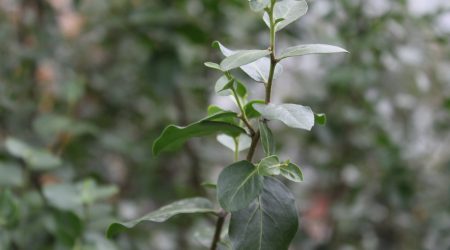Antimicrobial resistance is one of the biggest problems we’re facing in the 21st century; there is an urgent need for new antibiotics and antifungals
Without new therapeutics, diseases which have been eradicated throughout history could return, and routine operations become impossible due to the threat of infection.
In both cases pathogenic microbes have become resistant to existing antimicrobial drugs.
It can take decades to move from fundamental discovery to a drug we can use to treat a person, and where do you begin to look?
Microbes can perform amazing chemistry to create molecules with highly elaborate chemical structures. These specialised metabolites account for more than two-thirds of the clinical antibiotics that we use today.
The Molecules from Nature Institute Strategic Programme (ISP) at the John Innes Centre is working on some key scientific questions to understand the what, how and why of specialised metabolites.
The search is aided by the range of cutting-edge technology available at the John Innes Centre. These include chromatography, mass spectrometry and nuclear magnetic resonance spectroscopy, a suite of technology to decipher often large and complex molecular chemical structures.
– Dr Sibyl Batey, a researcher in the Wilkinson group.
“A great advantage to us is that the genes that code for the biosynthesis of a particular metabolite tend to be found in the same genomic location in what is known as a biosynthetic gene cluster.”
Biosynthetic gene clusters (BGCs) are organised groups of genes involved in the production of specialised metabolites.
A BGC is typically responsible for one or several similar compounds with bioactivities that usually only vary in terms of potency and/or specificity.
A vital tool to investigate biosynthesis is next generation genome sequencing; we are now in the genomic era of antibiotic discovery where genome sequencing is cheaper and more readily available.
A number of bioinformatic tools are used to scour the genomes of plants and microorganisms to help us find the BGCs in the wealth of genomic information.
“With this genomic information we can then probe the biosynthesis using genetic manipulation methods. In the case of the prolific antibiotic producing bacteria Streptomyces, many of the tools for genetic manipulation were developed at the John Innes Centre and these allow us to conduct bioengineering to produce antibiotics with improved properties,” says Dr Batey.
Protein crystals of the obafluorin target viewed under polarised light
It is not just in microbes that BGCs are proving useful in mapping genetic locations. Numerous examples have been discovered in plants too and more is becoming known about these important examples of gene organisation.
Plant BGCs reported in recent years encode compounds of agricultural and medical importance.
Recent work by Professor Anne Osbourn’s group took advantage of advances in sequence data of Arabidopsis thaliana and its relatives in a study which sheds light on the occurrence, nature and evolution of plant BGCs.
The study focuses on the thalinol BGC and identifies new genetic drivers underlying gene organisation. This specifically highlights the importance of chromosomal inversions as a molecular mechanism that may shuffle more distant genes into the cluster.
Drug discovery not only involves identifying the biosynthetic pathways, the genes and protein products that they encode, but also identifying the target of antibiotics and detailing the interaction between antibiotics and targets.
There are several main targets in bacteria: cell-wall synthesis, DNA gyrase, metabolic enzymes, DNA-directed RNA polymerase and protein synthesis.
Targeting these biochemical processes essential to cellular maintenance and reproduction is usually lethal to bacterial cells.
In a recent study, researchers in the Wilkinson group took an immunity-guided approach to identify the target and mode of action of obafluorin, which was previously known to have antibiotic activity.
Produced by the bacteria Pseudomonas fluorescens, obafluorin is active against both gram-positive and -negative pathogens, including other Pseudomonas species, many of which are major threats to human and plant health.
However the biological target of obafluorin was unknown. To uncover this, the Wilkinson group addressed another key question in relation to AMR: what is the immunity mechanism that the antibiotic producing bacterium uses to protect itself?
Dr Batey, one of the first authors of the study along with John Innes Centre alumnus Dr Thomas Scott, says,
The study revealed that the target of obafluorin is a highly conserved tRNA synthetase enzyme that is essential for protein synthesis.
Investigation of the obafluorin BGC across several bacterial species revealed that the gene that confers immunity to the bacteria encodes an additional, resistant copy of the tRNA synthetase they called ObaO, that protects the bacteria from the effects of its own antibiotic.
The study highlights the value of analysing immunity-mechanisms in microorganisms and will enable the generation of improved obafluorin variants.
The next stage study is to identify the mechanism by which obafluorin inhibits its target.
Professor Barrie Wilkinson, academic lead of the Molecules from Nature ISP says,
“This work has thrown up some intriguing observations about immunity mechanisms and how bacteria become resistant to antibiotics. And tRNA synthetases are a conserved family of enzymes that allow organisms to build proteins throughout nature, so the findings have wide potential applications. All the evidence suggests obafluorin acts in a novel manner – it’s a tricky problem but it’s going to be good fun to try and work it out.”





